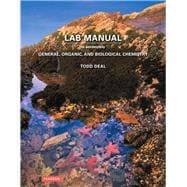Laboratory Manual for General, Organic, and Biological Chemistry can accompany the lab portion of any one-semester GOB chemistry course. Most experiments include a link to the health sciences, such as nursing and nutrition, while concepts are framed in real-world questions and are broadly applicable. Many of the experiments illustrate concepts from more than one chapter of the text and often utilize basics from the areas of general, organic, or biological chemistry to develop concepts in one or more of the other areas. This integrated strategy helps students to understand that chemistry is not a disparate set of unrelated concepts. Using this integrated approach, students develop the skills to help them understand chemistry and to see its applications in their everyday lives.










